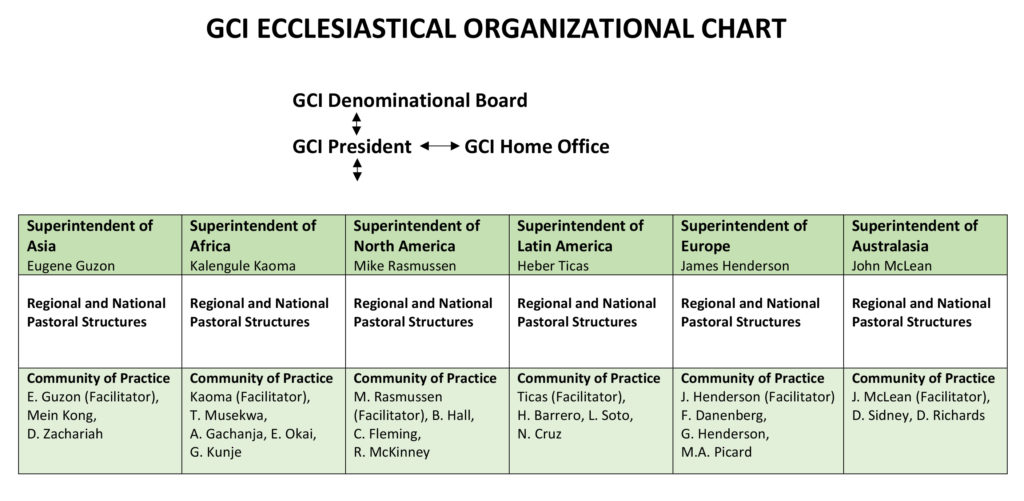by Marlene Winell
Religious Trauma Syndrome is the condition experienced by people who are struggling with leaving an authoritarian, dogmatic religion and coping with the damage of indoctrination. They may be going through the shattering of a personally meaningful faith and/or breaking away from a controlling community and lifestyle. RTS is a function of both the chronic abuses of harmful religion and the impact of severing one’s connection with one’s faith. It can be compared to a combination of PTSD and Complex PTSD (C-PTSD). This is a summary followed by a series of three articles which were published in Cognitive Behaviour Therapy Today.
Religious Trauma Syndrome has a very recognizable set of symptoms, a definitive set of causes, and a debilitating cycle of abuse. There are ways to stop the abuse and recover.
Symptoms of Religious Trauma Syndrome:
• Cognitive: Confusion, poor critical thinking ability, negative beliefs about self-ability & self-worth, black & white thinking, perfectionism, difficulty with decision-making
• Emotional: Depression, anxiety, anger, grief, loneliness, difficulty with pleasure, loss of meaning
• Social: Loss of social network, family rupture, social awkwardness, sexual difficulty, behind schedule on developmental tasks
• Cultural: Unfamiliarity with secular world; “fish out of water” feelings, difficulty belonging, information gaps (e.g. evolution, modern art, music)
Causes of Religious Trauma Syndrome:
Authoritarianism coupled with toxic theology which is received and reinforced at church, school, and home results in:
• Suppression of normal child development – cognitive, social, emotional, moral stages are arrested
• Damage to normal thinking and feeling abilities -information is limited and controlled; dysfunctional beliefs taught; independent thinking condemned; feelings condemned
• External locus of control – knowledge is revealed, not discovered; hierarchy of authority enforced; self not a reliable or good source
• Physical and sexual abuse – patriarchal power; unhealthy sexual views; punishment used as for discipline
Cycle of Abuse
The doctrines of original sin and eternal damnation cause the most psychological distress by creating the ultimate double bind. You are guilty and responsible, and face eternal punishment. Yet you have no ability to do anything about it. (These are teachings of fundamentalist Christianity; however other authoritarian religions have equally toxic doctrines.)
You must conform to a mental test of “believing” in an external, unseen source for salvation, and maintain this state of belief until death. You cannot ever stop sinning altogether, so you must continue to confess and be forgiven, hoping that you have met the criteria despite complete lack of feedback about whether you will actually make it to heaven.
Salvation is not a free gift after all.
For the sincere believer, this results in an unending cycle of shame and relief.
Stopping the Cycle
You can stop the cycle of abuse, but leaving the faith is a “mixed blessing.” Letting go of the need to conform is a huge relief. There is a sense of freedom, excitement about information and new experiences, new-found self-respect, integrity, and the sense of an emerging identity.
There are huge challenges as well. The psychological damage does not go away overnight. In fact, because the phobia indoctrination in young childhood is so powerful, the fear of hell can last a lifetime despite rational analysis. Likewise the damage to self-esteem and basic self-trust can be crippling. This is why there are so many thousands of walking wounded – people who have left fundamentalist religion and are living with Religious Trauma Syndrome.
Mistaken Identity
Religious Trauma Syndrome mimics the symptoms of many other disorders –
post-traumatic stress disorder
clinical depression
anxiety disorders
bipolar disorder
obsessive compulsive disorder
borderline personality disorder
eating disorders
social disorders
marital and sexual dysfunctions
suicide
drug and alcohol abuse
extreme antisocial behavior, including homicide
There are many extreme cases, including child abuse of all kinds, suicide, rape, and murder. Not as extreme but also tragic are all the people who are struggling to make sense of life after losing their whole basis of reality. None of the previously named diagnoses quite tells the story, and many who try to get help from the mental health profession cannot find a therapist who understands.
What’s the problem?
We have in our society an assumption that religion is for the most part benign or good for you. Therapists, like others, expect that if you stop believing, you just quit going to church, putting it in the same category as not believing in Santa Claus. Some people also consider religious beliefs childish, so you just grow out of them, simple as that. Therapists often don’t understand fundamentalism, and they even recommend spiritual practices as part of therapy. In general, people who have not survived an authoritarian fundamentalist indoctrination do not realize what a complete mind-rape it really is.
In the United States, we also treasure our bill of rights, our freedom of speech, freedom of assembly, and freedom of religion. This makes it extremely difficult to address a debilitating disorder like RTS without threatening the majority of Americans. Raising questions about toxic beliefs and abusive practices in religion seems to be violating a taboo. No one wants to be pointing fingers for fear of tampering with our precious freedoms.
But this is the problem. Sanitizing religion makes it all the more insidious when it is toxic. For example, small children are biologically dependent on their adult caretakers; built into their survival mechanisms is a need to trust authority just to stay alive. Religious teachings take hold easily in their underdeveloped brains while the adults conveniently keep control. This continues generation after generation, as the religious meme complex reproduces itself, and masses of believers learn to value self-loathing and fear apocalypse.
There is hope
Awareness is growing about the dangers of religious indoctrination. There are more and more websites to support the growing number of people leaving harmful religion. Slowly, services are growing to help people with RTS heal and grow, including Journey Free. We are discovering the means by which people can understand what they have been through and take steps to become healthy, happy human beings.
--------
What it means to leave
Breaking out of a restrictive, mind-controlling religion is understandably a liberating experience. People report huge relief and some excitement about their new possibilities. Certain problems are over, such as trying to twist one’s thinking to believe irrational religious doctrines, handling enormous cognitive dissonance in order to get by in the ‘real world’ as well, and conforming to repressive codes of behavior. Finally leaving a restrictive religion can be a major personal accomplishment after trying to make it work and going through many cycles of guilt and confusion.
However, the challenges of leaving are daunting. For most people, the religious environment was a one-stop-shop for meeting all their major needs – social support, a coherent worldview, meaning and direction in life, structured activities, and emotional/spiritual satisfaction. Leaving the fold means multiple losses, including the loss of friends and family support at a crucial time of personal transition. Consequently, it is a very lonely ‘stressful life event’ – more so than others described on Axis IV in the DSM. For some people, depending on their personality and the details of their religious past, it may be possible to simply stop participating in religious services and activities and move on with life. But for many, leaving their religion means debilitating anxiety, depression, grief, and anger.
Usually people begin with intellectually letting go of their religious beliefs and then struggle with the emotional aspects. The cognitive part is difficult enough and often requires a period of study and struggle before giving up one’s familiar and perhaps cherished worldview. But the emotional letting go is much more difficult since the beliefs are bound with deep-seated needs and fears, and usually inculcated at a young age.
Problems with self-worth and fear of terrible punishment continue. Virtually all controlling religions teach fear about the evil in ‘the world’ and the danger of being alone without the group. Ordinary setbacks can cause panic attacks, especially when one feels like a small child in a very foreign world. Coming out of a sheltered, repressed environment can result in a lack of coping skills and personal maturity. The phobia indoctrination makes it difficult to avoid the stabbing thought, even many years after leaving, that one has made a terrible mistake, thinking ‘what if they’re right?’
It is truly amazing the pain I went through due to what was inputted into my mind… All I know is it took such a toll on me that I did not care if I died and went to hell to escape the hell I was in and the immense fear it put into my life.
Depression, anxiety, fatigue, insomnia, etc... you name it. It sucks. Probably from years of guilt being a Christian and a sinner, and thinking people I love are in hell.
Making the break is for many the most disruptive, difficult upheaval they have ever gone through in life. To understand this fully, one must appreciate the totality of a religious worldview that defines and controls reality in the way that fundamentalist groups do. Everything about the world - past, present, and future – is explained, the meaning of life is laid out, morality is already decided, and individuals must find their place in the cosmic scheme in order to be worthwhile. The promises for conformity and obedience are great and the threats for disobedience are dire, both for the present life and the hereafter. Controlling religions tend to limit information about the world and alternative views so members easily conclude that their religious worldview is the only one possible. Anything outside of their world is considered dangerous and evil at worst and terribly misguided at best. So leaving this sheltered environment is bursting a bubble. Everything a person has believed to be true is shattered.
My foundation has truly dropped out from under me. Despite being told I am courageous, tenacious, and this is rugged work, I consistently find wave after wave of grief that overwhelms me. I can hardly believe how upended it has made my life.
My whole sense of purpose, value, and meaning was wrapped tightly around my Christian faith...I kept my doubts buried and crucified, and I tried hard not to think about the troubling things of faith...A year ago, I abandoned evangelicalism...the pain I feel is deep and raw.
The impact can create problems with day-to-day functioning.
The amount of inner turmoil during this time was overwhelming. It affected my daily life and many days I didn’t want to get out of bed. I was depressed and anxious at the same time. Being in college was difficult. I could hardly focus on class.
I am utterly confused and at the moment my whole life is ruined as I don't know what to think. I've been off work a month with anxiety.
I have - for about three years - been dependent on drinking alcohol every night for a very long time.



